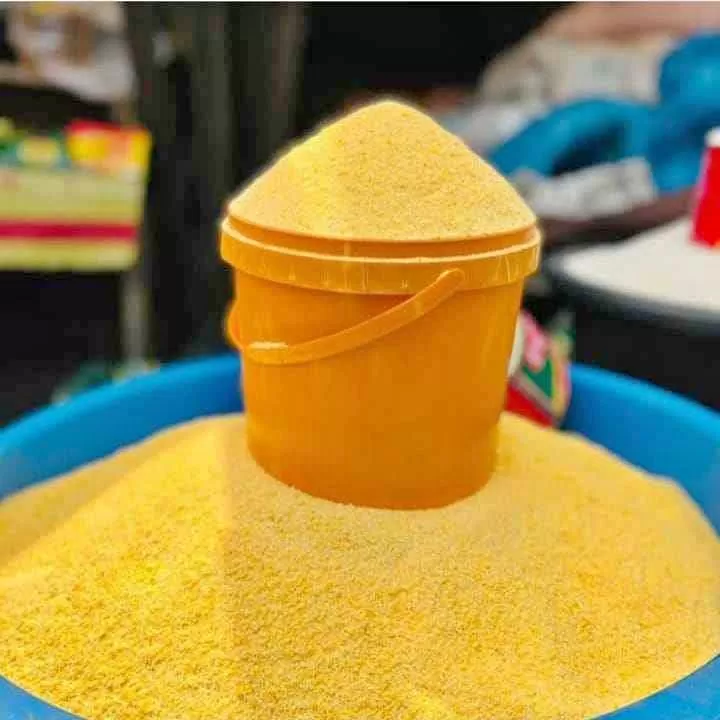Garri is a popular food in West Africa, and it is consumed by almost 90% of the population in the region. Despite of this, many people do not know a lot about Garri apart from the fact that it contains carbohydrate and it is made from Cassava.

In West Africa, Garri (also referred to as gari, galli, or gali) is the flour of the fresh starchy cassava root. In the Hausa language, Garri is also called the flour of guinea corn, maize, rice, yam, plantain and millet.
For example, garin dawa is made from guinea corn, garin masara and garin alkama originate from maize and wheat respectively, while garin magani is a powdery medicine.
Starchy flours mixed with cold or boiled water form a major part of the diet in Nigeria, Benin, Togo, Ghana, Guinea, Cameroon and Liberia.
Cassava, the root from which Garri is produced, contains fiber, copper and magnesium. Garri is similar to farofa of Brazil, used in many dish preparations and recipes, particularly in the state of Bahia.
How to Process Garri
To process Garri flour, cassava tubers are uprooted, peeled, washed and grated or crushed to produce a mash. The mash can be mixed with palm oil and placed in a porous bag, which is then placed in an adjustable press machine or iron presser for 1–24 hours to remove the water.
Once dried, the Garri is then sieved and fried in a large stainless steel frying pot or in a large aluminum frying tray, with or without palm oil. The resulting dry granular Garri can be kept for long periods. It may be pounded or ground to make a fine flour.
Garri comes in several consistencies, including rough, medium and smooth, which are used to prepare different foods.
Garri Dishes

Eba is a stiff dough made by soaking garri in hot water and kneading it with a wooden baton until it becomes a smooth doughy staple. It is served as part of a meal with soups and sauces.
Some of these include okra soup, egusi soup, vegetable soup, afang soup, banga soup and bitter leaf soup. Similar starchy doughs are found as staples in other African cuisines.
Kokoro is a Nigerian snack food common in southern and southeast Nigeria, especially Abia State, Rivers State, Anambra State, Enugu State and Imo State. It is made from a paste of maize flour, mixed with garri and sugar and deep-fried.
As a snack, cereal, or light meal, garri can be soaked in cold water (in which case it settles to the bottom), mixed with sugar or honey, and sometimes roasted peanuts and/or evaporated milk, also known as garri soakings. The amount of water needed for soaked garri is 3:1. Garri can also be eaten dry with sugar and roasted peanut. Other ingredients include coconut chunks, tiger nut milk, and cashews.
In Liberia, garri is used to make a dessert called kanyan which is combined with peanuts and honey.
In its dry form, garri is used as an accompaniment for soft cooked beans and palm oil. This food mix is called yoo ke garri, or garri-fɔtɔ/galli-fɔtɔ (crushed garri) in the Ga language of Ghana and the Gen dialect of southern Togo and Benin.
This type of garri is a mixture of moistened garri kneaded with a thickened tomato paste, oil, salt, seasonings. Yoo ke garri is garri with beans, which is typically eaten as lunch.[2] It is also eaten with bean cake in Nigeria.
Smooth garri (known as lebu to the Yoruba) can be mixed with pepper and other spicy ingredients. A small amount of warm water and palm oil is added and softened by hand. This type of garri is served with fried fish. It is served with frejon on Good Friday.
In Nigeria, the Efik people use dry garri to thicken light soup like ‘egg soup and white soup also called Afia Efere soup

